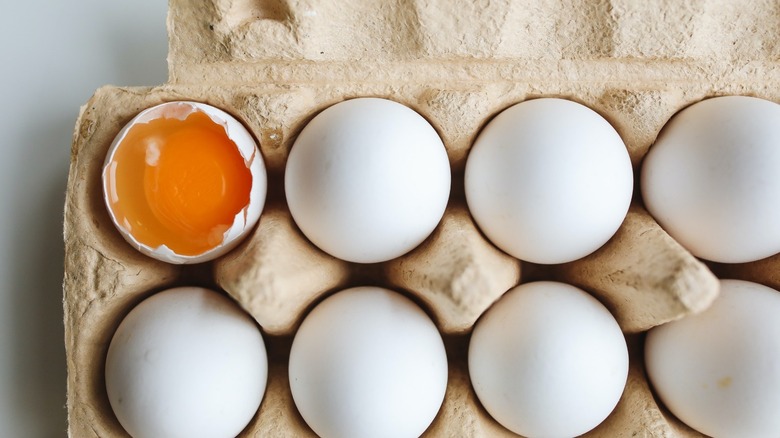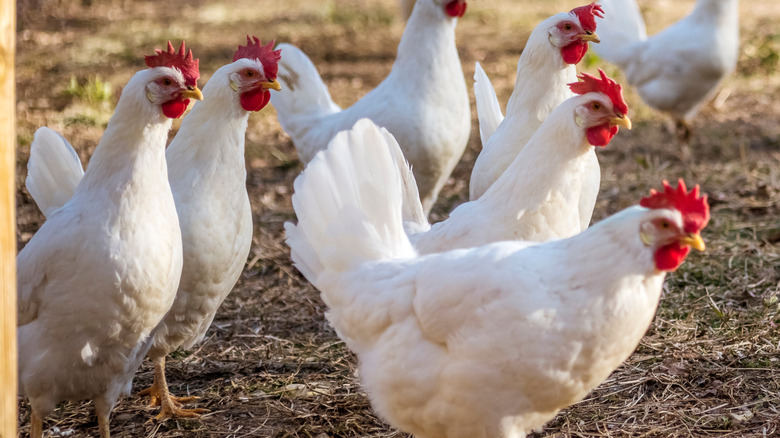Your Grocery Store Eggs Probably Came From This Type Of Chicken
As you're opening carton after carton of eggs, examining them for pesky cracks and unfortunate pools of yolk, have you ever wondered what the chicken that laid them looks like? Since most cartons contain eggs that look nearly indistinguishable, it might not be surprising to hear that commercial egg producers use their very own breeds of chicken developed specifically to be egg-producing specialists. According to Mom.com, these proprietary chickens have been bred specifically for the desirable properties of their eggs, like color and size.
But, these proprietary birds all start with similar breeds, and one breed in particular is responsible for laying 90% or more of the white, protein-rich eggs that are sold in stores today, as reported by Mom.com. The breed may even be the inspiration for your favorite cartoon chicken! So, what breed produces the most eggs sold in grocery stores?
Leghorn chickens lay most of the eggs you find in grocery stores
The breed most likely responsible for laying the eggs you purchased from your favorite grocery store are leghorn chickens, according to Mom.com. If you're thinking Foghorn Leghorn of "Looney Tunes" fame must have gotten his name from this breed, I say, then pat yourself on the back! According to The Happy Chicken Coop, leghorns can be white or other colors, with red wattles, and a single (upright, peaked) or rose (flat, nubby) comb. This extraordinary bird can lay between 280 and 320 eggs a year, per the website.
We probably don't have to inform you that chocolate milk does not come from brown cows. According to Mom.com, that is not always the case with brown eggs, and the Rhode Island Red is a common ancestor of some of the most efficient of the commercial brown egg-laying chickens. This bird varies in color from "rich mahogany" to "dark rust" according to The Happy Chicken Coop, and should have a wattle, comb (usually upright), and earlobes that are all red in color.
According to Purina Mills, there may be a way to tell what color a chicken's egg will be just by looking at the bird. The farm animal feed company explains that hens with white earlobes usually lay white eggs while hens with red earlobes are more likely to produce brown eggs. Of course, there are exceptions, and birds can produce different shades of eggs on different days. But, hey, can't we all throw a little different shade depending on the day?

